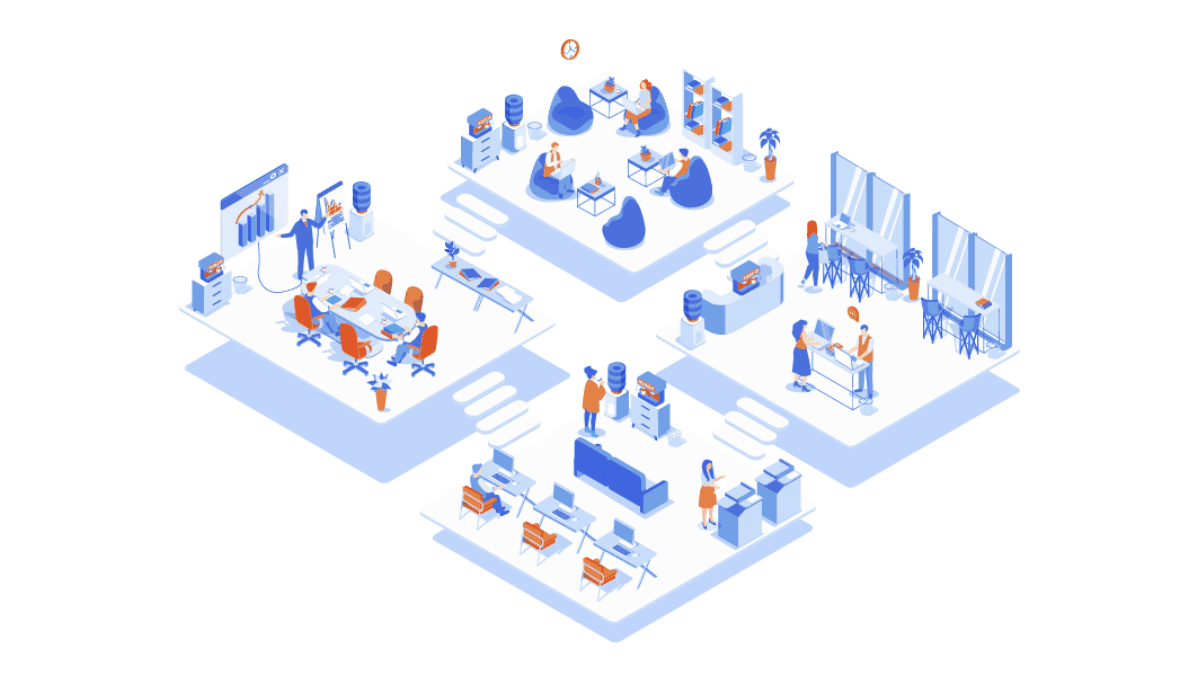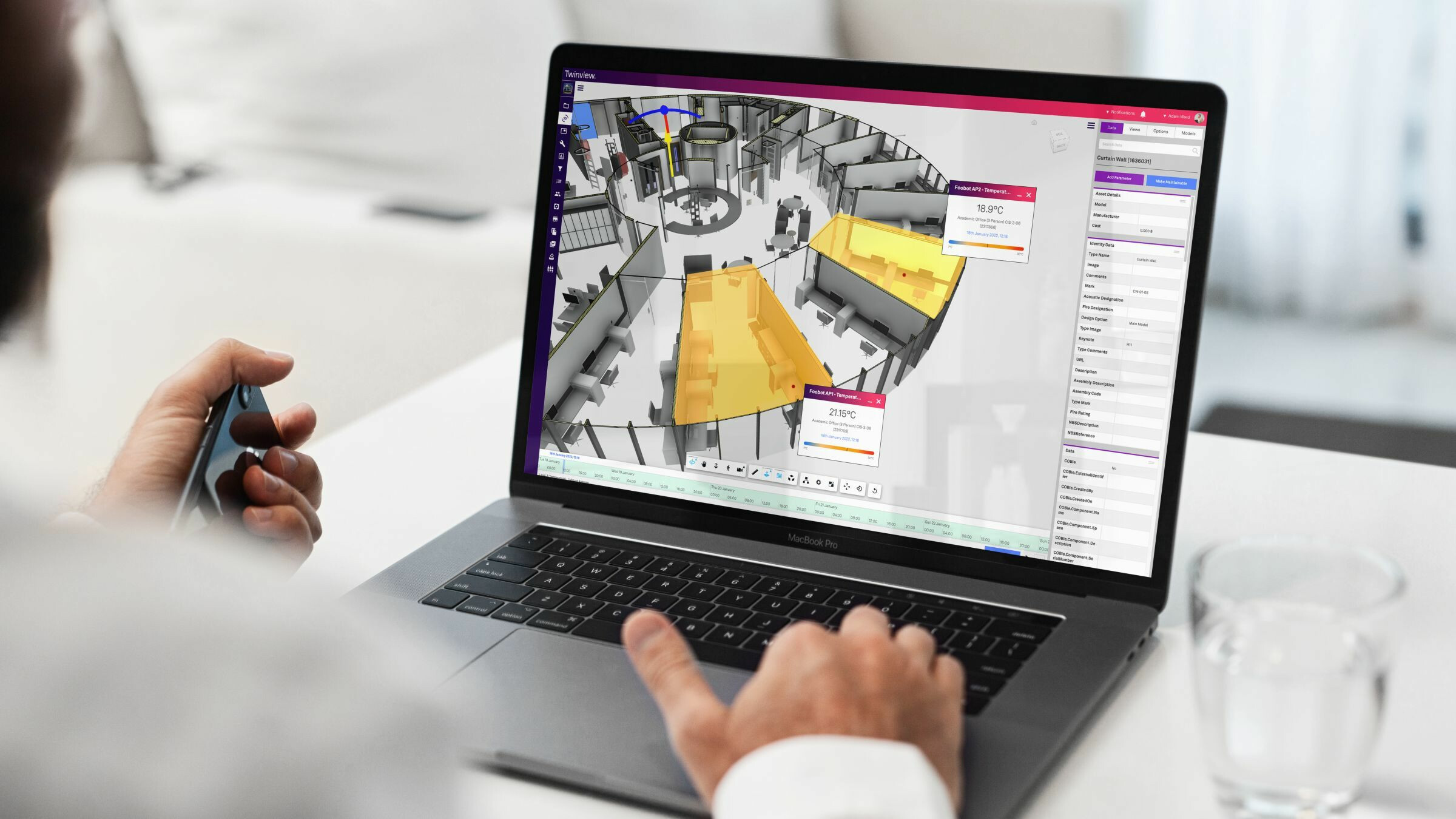22 Sep 2022 | Industry Insights
The Future of Space Utilisation

The Future of Space Utilisation
Effective space management takes people, processes and places into consideration.
Traditionally space utilisation has been a percentage calculated from the number of occupants divided by the total capacity. However, businesses are beginning to recognise that space management is more than a calculation but rather multifaceted.
Understanding and managing facility space is about more than square footage. Visibility into modern working environments means knowing how these spaces are used, how often, and by whom. Gaining insights into space utilisation allows owners and management to drive efficiencies, improve occupier experience, save money, reduce carbon output and create new revenue streams.
"For the many firms just beginning their space management journey, the starting point should be analysing existing space data."
- Ben Hext, Verdantix Industry Analyst
Starting from within, unlocking optimal utilisation is crucial in cultivating business success in the current climate. Offices, universities and other commercial spaces can benefit significantly from deep diving into their space utilisation data. Essential for planning growth, these informative findings can identify how people consume spaces whilst highlighting saving opportunities. Additionally, understanding space utilisation and optimising resources are essential in times of fundamental change.
Hybrid Working
Since the Covid-19 pandemic, there has been a shift to a hybrid working model; where offices are no longer visited five times a week between the hours of 9-5. In a recent CBRE Future of the Office survey, 80% of large enterprises defined their current and future workplace policy as "hybrid guided flexibility," meaning employees will split their time between home and the office.
With hybrid models here to stay, one thing that has become continually evident in moving forward is that flexibility is paramount for businesses to succeed. Flexibility allows individuals to feel more empowered, find a better work-life balance and get their work done when they are most productive.
When it comes to the post-pandemic world of work, along with flexibility, on-site is also required to be:
- a collaborative social hub
- somewhere that reflects both environmental and social beliefs
- a place of prioritised well-being
- an enabler of productivity
Obtaining data from several forms of space utilisation measurements is recommended to acquire a more precise illustration of how companies should move forward. The following are four of the primary metrics:
- Time: Time-based space utilisation data records daily, weekly, monthly or yearly use. It identifies routines and timings in which occupants are using which locations. From this information, owners and managers can predict busier and quieter times and make more precise decisions that optimise spaces throughout an entire 24-hour period.
- Space: Space tracking will gather information based on the available capacity of each floor or selected area. Management can better recognise and handle wear and tear by collecting meeting room utilisation rates, desk occupancy, and peak areas where individuals visit most. Organisers can also implement initiatives to reduce congestion and improve flow by effectively monitoring room usage.
- Groups and Teams: Are there unused desks in marketing that accounting might need? Are product development using conference rooms more often than others on the same floor? By pairing groups with spaces and acquiring knowledge of which teams are where and who needs what, management can drive operational efficiencies and lessen wasted resources.
- Location: Utilisation trends can also be valuable concerning the general location of the space. For example, a workforce may be better suited to one central location rather than being separated between two. Examining facility usage location-by-location can also paint a clearer picture and open an array of cost-saving opportunities. By widening their data pool, owners and managers can identify the best possible location for fulfilling occupier needs. Furthermore, management can feel more secure in their decision to move locations (this could be to lower operational costs or carbon output) or reassurance that their current location is the best place for their workforce or students.
Overall, teams can make more informed, productive decisions by accessing the information provided by these metrics.
Intelligent software and smart devices such as asset trackers, occupancy sensors, 3D model replicas, room booking and hot-desking systems, alongside many other innovations, make this possible. These devices continuously collect and store accurate, real-time space utilisation data; with this information, management can make changes that positively impact new procedures with increased vigour.
As businesses move away from assigned seats to a more flexible, hybrid workplace, enlisting the help of space management software and connected IoT devices is arguably vital in ensuring seamless transitions and solutions with the future in mind.
Those mentioned above all have one thing in common: to realise positive outcomes; data is essential for enterprises.
Maximising resources whilst meeting new employee demands is a lot to juggle; however, as workloads increase, innovative technological mechanisms come into play.
Space management software brings all space data, including detailed floor plans, into one system where users can create dynamic scenarios and comprehend the impact of each. By combining building information with space metrics (collected by IoT sensors and devices), intelligent software maps out how companies can optimise their real estate.
The Twinview platform and its integrated IoT and AI technology support tactical and operational goals by providing reliable, objective data for decisions, budgets, and resource allocation. Twinview provides a comprehensive view of how space is utilised, enabling management to make informed decisions and act on improvement opportunities that are cohesive with established business priorities.
Bespoke to each business's needs, Twinview's customisable dashboards and reporting are fulfilled with reliable real-time data collected by IoT sensors and devices. The interconnected nature of IoT devices offers automated governance across an entire building. As a result, decisions can be made based on each unique room on a case-by-case basis.
Gain space usage information with built-in people detection and motion detection systems. With these smart devices, you can obtain information on numbers per room, numbers per floor, average duration in the space and movement around the building. This recorded information allows managers to create accurate space management reports highlighting the most used and underused departments.
Further, enhance your space utilisation with heat mapping. This specific presentation of information highlights differences in individual spaces, footfall and desk allocation to ensure you get the most out of your building information. Heatmapping demonstrates how busy an area is or, even more detailed, how often an asset is used. Areas presented as "warmer" are regularly identified and checked compared to "colder" spaces. This presentation of data amplifies its user's understanding of their building and guides space prioritisation methods.

Twinview utilises real-time occupancy data to identify the areas where you can save on operational expenditure. For instance, IoT devices around the building connect footfall information to Twinview's platform. Facilities managers can use this helpful information to create provisions surrounding energy-efficient strategies. Twinviews' sophisticated AI, backed by market analytics, shows the most competitive energy prices based on real-time data. As a result, occupants are comfortable, carbon emissions are minimised, and the building isn't wasting precious resources.
Selected users can monitor activity across their buildings and entire estates with remote supervision. Using any device connected to the internet, Facilities Managers can access real-time space information anytime, anywhere. Digital accessibility allows facilities managers to act remotely from on or off-site at the click of a button or tap of a screen.
Twinview improves space utilisation by empowering users with the tools to enhance the many facets of their working day. Occupants have the power to check the availability of rooms and book them out. They can also enjoy many other benefits such as heating control, air quality reporting and lighting control to optimise their environment, allowing them to feel as comfortable as possible for the days when they commute to the office.
Using a digital twin linked to IoT devices, owners and facilities managers gain a deeper insight into the utilisation of each space. Book a demo with Twinview to find out how to increase space utilisation whilst improving the occupier experience, reducing costs and lowering operational emissions.
Ready to get started?
Book your one-on-one appointment with one of our specialists.
info@twinview.com
+44 (0)844 800 6660
London
24 Greville Street
Farringdon
London
EC1n 8SS
Newcastle
Spaceworks
Benton Park Road
Newcastle upon Tyne
NE7 7LX

